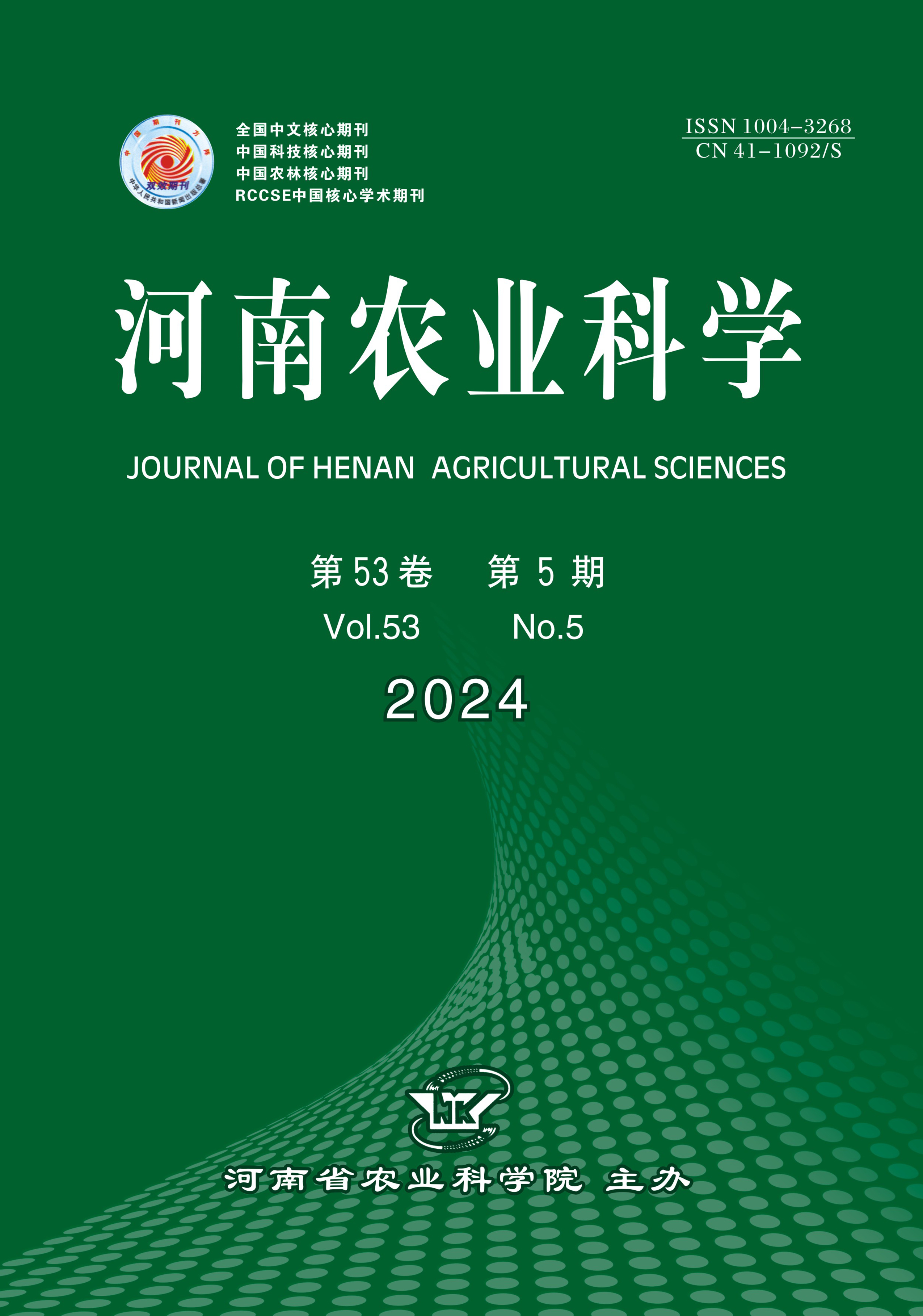-
Screening and Safety Evaluation of Herbicides for Weed Control in Tobacco Fields in Guizhou
- GUO Tao, YU Zhihe, XUE Yuan, JIANG Chaoying, CHEN Lili, WANG Ying, WANG Hancheng, CHEN Li, LIN Musen, GAO Gui
-
2024, 53(5):
112-122.
DOI: 10.15933/j.cnki.1004-3268.2024.05.012
-
 Asbtract
(
)
Asbtract
(
)
 PDF (6655KB)
(
)
PDF (6655KB)
(
)
-
References |
Related Articles |
Metrics
In order to understand the weed species in the tobacco fields of Guizhou,screen for safe and efficient weed control herbicides and evaluate their safety,we investigated the hazardous conditions of weeds in the tobacco fields of Guizhou,and evaluated the efficacy of eight herbicides(960 g/L S‑metolachlor EC,480 g/L metribuzin SC,30% glyphosate AS,81.5% acetochlor EC,30% clopyralid AS,20% diquat AS,108 g/L haloxyfop‑R‑methyl EC and 36% glufosinate‑ammonium‑glyphosate AS)by pre‑emergence and stem‑leaf control of weeds in tobacco fields,as well as their safety to tobacco.The results showed that there were a total of 49 species of weeds in 26 families and 43 genera in the tobacco fields,with Polygonum,Asteraceae and Gramineae weed species predominating,and there were nine common species of Polygonum nepalense,Chenopodium album,Amaranthus vividis,Stellaria media,Capsella bursa‑pastoris,Galinsoga parviflra,Digitaria sanguinalis,Echinochloa crusgalli and Cyperus rotundus.The tested herbicides showed different weed control effects,among which the pre‑emergence soil sealing treatments of acetochlor,S‑metolachlor and metribuzin and the post‑emergence stem‑leaf treatments of glyphosate,glufosinate‑ammonium‑glyphosate,diquat and metribuzin had a population control effect of 90.41%—97.71% against weeds in the tobacco fields,and clopyralid and haloxyfop‑R‑methyl were selective for weeds control and were effective against Asteraceae and Gramineae weeds,respectively.Soil treatments of S‑metolachlor and acetochlor were safe for tobacco at recommended dosage,but were harmful at high dosage.Haloxyfop‑R‑methyl,glyphosate,diquat and glufosinate‑ammonium‑glyphosate were relatively safe for tobacco in targeted spraying of them on weed stems and leaves.Both soil treatment and stem‑leaf treatment of metribuzin and clopyralid caused serious harm to tobacco. In conclusion,S‑metolachlor and acetochlor were suitable for soil sealing treatment to control weeds at recommended dosage,haloxyfop‑R‑methyl was suitable for stem‑leaf treatment to control grass weeds,glyphosate,diquat and glufosinate‑ammonium‑glyphosate could be used for strictly targeted spray on weed stems and leaves between rows in tobacco fields,and metribuzin and clopyralid were not suitable for weed control in tobacco fields.
